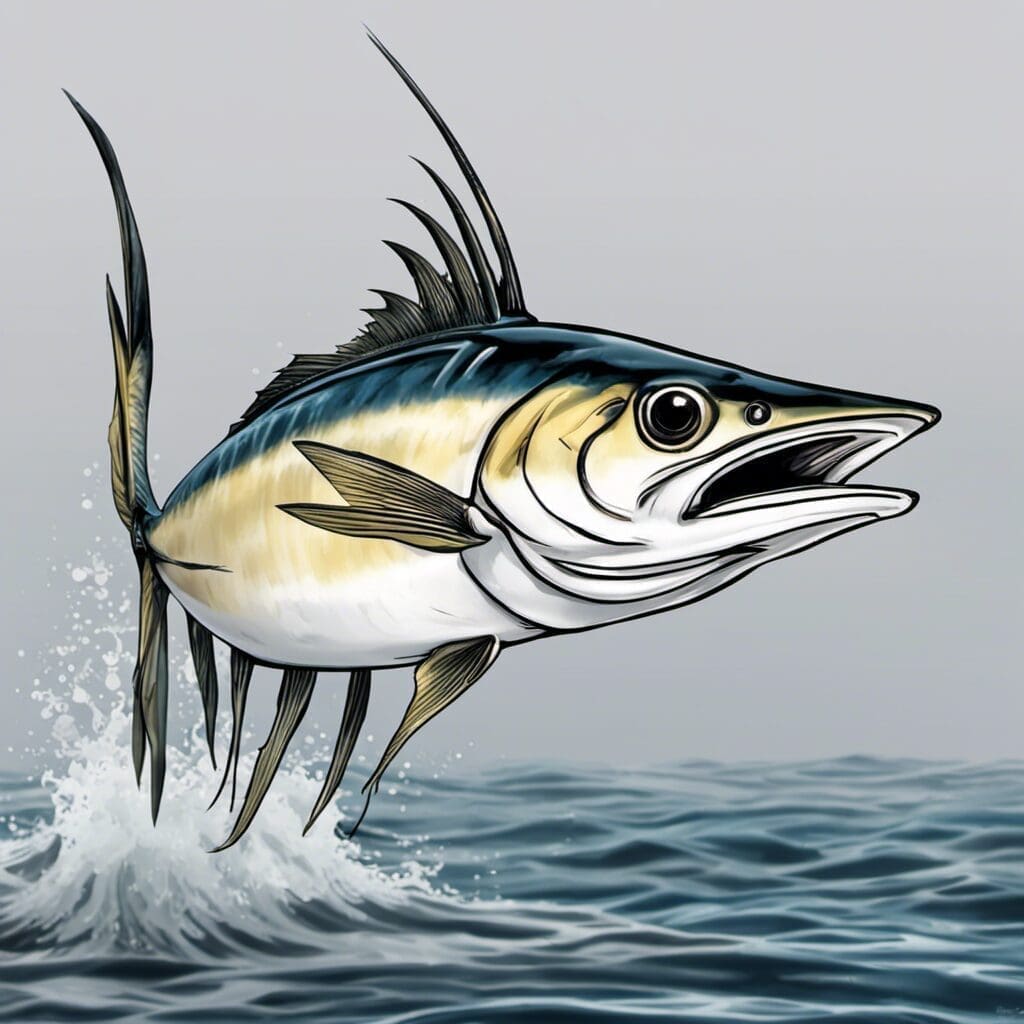Introduction
The Longbill Spearfish (Tetrapturus pfluegeri) is a pelagic marlin species from the Istiophoridae family. An agile swimmer, the Longbill Spearfish has an elongated body shape, perfectly suited to its ocean-going lifestyle.
Conservation Status
The current conservation status of the Longbill Spearfish is classified as Least Concern according to the International Union for Conservation of Nature (IUCN). This indicates that there are no immediate threats affecting their survival and population. There are no special conservation efforts targeted at this species.
Statistics
| Attribute | Average | Range |
|---|---|---|
| Length | 120 cm | 75-150 cm |
| Weight | 30 kg | 15-50 kg |
| Average Lifespan | 5-8 Years | 5-8 Years |
Distribution
The Longbill Spearfish calls the Atlantic Ocean its home, typically found between 45°N and 35°S in the western and eastern parts of the Atlantic. This species is not known to migrate, instead it stays in regions with temperatures ranging from 22-28 degrees Celsius.
Habitats
Longbill Spearfish resides in oceans and salty waters, typically staying within a depth range of 0-200m. They prefer a water temperature of 22-28°C.
When and Where to See
The seasonal patterns of Longbill Spearfish are not well defined, however, they are generally more active during warmer months. Their peak activity often happens in the warm hours of daylight.
Best Fishing Locations
Fishing for Longbill Spearfish can be an exciting endeavor due to their agile nature and powerful fights. Some of the top fishing locations include the coasts of countries bordering the Atlantic Ocean such as United States, Brazil, Portugal, Spain, and Senegal.
How to Catch
Often caught using trolling techniques with ballyhoo, mullets or squid as bait, Longbill Spearfish put up an athletic display once hooked, making them a target for sport fishers.
Identification Guide
Longbill Spearfish can be identified by their slate-blue body, which lightens to a silver-white down its sides and belly. They get their name from their long, slender bill that is significantly longer than that of other billfish species.
Culinary
While not typically targeted for their meat, Longbill Spearfish can be cooked in a variety of ways similar to other billfish. They have a sweet and delicate flavor that pairs well with a variety of sides and sauces.
Additional Information
They are known for their swift, acrobatic leaps and long runs when hooked, making them a popular target for sport fishermen around the globe. Longbill Spearfish are typically solitary but can be seen in small groups.
Behavior
Longbill Spearfish are pelagic feeders, consuming a diet primarily of small fish and cephalopods.
Predators and Threats
Sharks and larger billfish species are known natural predators of Longbill Spearfish. Like many species, they face threats from overfishing and commercial fishing activities.
Cultural/Historical Significance
The Longbill Spearfish is recognized by the International Game Fish Association (IGFA) and there are annual tournaments where anglers compete to catch the largest specimen.
References and Further Reading
For a detailed study of the Longbill Spearfish, refer to the article FishBase, and for an understanding of their fight once hooked, reference International Game Fish Association.

